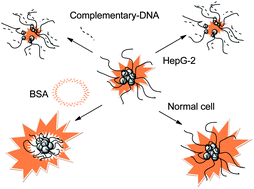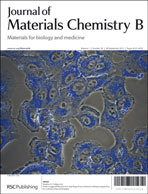Multi-DNA–Ag nanoclusters: reassembly mechanism and sensing the change of HIF in cells†
Abstract
A new type of fluorescent silver nanoclusters consisting of one silver bound to several strands of DNA, called multi-DNA–AgNCs, have been constructed using a bifunctional ![[C with combining low line]](https://www.rsc.org/images/entities/char_0043_0332.gif)
![[G with combining low line]](https://www.rsc.org/images/entities/char_0047_0332.gif)
![[T with combining low line]](https://www.rsc.org/images/entities/char_0054_0332.gif)
![[G with combining low line]](https://www.rsc.org/images/entities/char_0047_0332.gif) CT-3′ as a stabilizing agent. The target
CT-3′ as a stabilizing agent. The target


 Please wait while we load your content...
Please wait while we load your content...